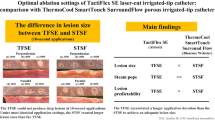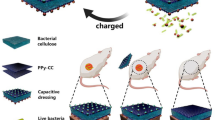Abstract
The aim of this study was to examine the structure of the crystalline bacterial biofilms that encrust and block silver/hydrogel-coated latex catheters. Scanning electron microscopy was used to examine the crystalline deposits that were found encrusting catheters obtained from six patients undergoing long-term catheterization in a community setting. Large populations of bacilli and cocci were seen on all catheters developing on a basal foundation layer of crystalline material. These observations show that in patients prone to catheter encrustation, crystalline material formed in the urine can cover the surfaces of silver catheters. Extensive bacterial biofilms then develop on the crystals, shielded from the underlying silver. It is suggested that if antimicrobials are to be incorporated into catheters to prevent encrustation, they must diffuse out from the catheter surface and reduce the viable cell populations of the urease producing bacteria that elevate the urinary pH and trigger crystal formation.








Similar content being viewed by others
References
Davenport K, Keeley FX (2005) Evidence for the use of silver-alloy-coated urethral catheters. J Hosp Infect 60:298–303. doi:10.1016/j.jhin.2005.01.026
Trueman P (2007) An economic analysis of how catheterisation can be made cost-effective. Urol News 12:21–23
Stickler DJ, Zimakoff J (1994) Complications of urinary tract infections associated with devices for long-term bladder management. J Hosp Infect 28:177–194. doi:10.1016/0195-6701(94)90101-5
Morris NS, Stickler DJ, McLean RJ (1999) The development of bacterial biofilms on indwelling urethral catheters. World J Urol 17:345–350. doi:10.1007/s003450050159
Morris NS, Stickler DJ, Winters C (1997) Which indwelling urethral catheters resist encrustation by Proteus mirabilis biofilms? Br J Urol 80:58–63
Morris NS, Stickler DJ (1998) Encrustation of indwelling urethral catheters by Proteus mirabilis biofilms growing in human urine. J Hosp Infect 39:227–234. doi:10.1016/S0195-6701(98)90262-6
Sabubba NA, Stickler DJ, Long MJ, Dong Z, Short TD, Feneley RJC (2005) Does the valve regulated release of urine from the bladder decrease encrustation and blockage of indwelling catheters by crystalline Proteus mirabilis biofilms? J Urol 173:262–266
Cox AJ, Hukins DWL (1989) Morphology of mineral deposits on encrusted urinary catheters investigated by scanning electron microscopy. J Urol 142:1347–1350
Ohkawa MT, Sugata T, Sawaki M, Nakashima T, Fuse H, Hisazumi H (1990) Bacterial and crystal adherence to the surfaces of indwelling urethral catheters. J Urol 143:717–721
MacLeod SM, Stickler DJ (2007) Species interactions in mixed-community crystalline biofilms on urinary catheters. J Med Microbiol 56:1549–1557. doi:10.1099/jmm.0.47395-0
Stickler DJ, Morgan SD (2008) Observations on the development of the crystalline bacterial biofilms that encrust and block Foley catheters. J Hosp Infect 69:350–360. doi:10.1016/j.jhin.2008.04.031
He G, Dahl T, Veis A, George A (2003) Nucleation of apatite crystals in vitro by assembled dentin matrix protein 1. Nat Mater 2:552–558. doi:10.1038/nmat945
Aherne DG, Grace DT, Jennings MJ, Borazjani RN, Boles KJ, Rose LJ, Simmons RB, Ahantou EN (2000) Effects of hydrogel/silver coatings on in vitro adhesion to catheters of bacteria associated with urinary tract infections. Curr Microbiol 41:120–125. doi:10.1007/s002840010105
Donlan RM, Costerton JW (2002) Biofilms: survival mechanisms of clinically relevant microorganisms. Clin Microbiol Rev 15:167–192. doi:10.1128/CMR.15.2.167-193.2002
Samuel U, Guggenbichler JP (2004) Prevention of catheter-related infections: the potential of a new nano-silver impregnated catheter. Int J Antimicrob Agents 23S1:S75–S78
Chakravarti A, Gangodawila S, Long MJ, Morris NS, Blacklock ARE, Stickler DJ (2005) An electrified catheter to resist encrustation by Proteus mirabilis biofilm. J Urol 174:1129–1132. doi:10.1097/01.ju.0000168618.79096.cb
Acknowledgment
We are grateful for the help of community nursing staff of the Bristol Primary Care Trust in the collection of the catheters.
Author information
Authors and Affiliations
Corresponding author
Rights and permissions
About this article
Cite this article
Morgan, S.D., Rigby, D. & Stickler, D.J. A study of the structure of the crystalline bacterial biofilms that can encrust and block silver Foley catheters. Urol Res 37, 89–93 (2009). https://doi.org/10.1007/s00240-009-0176-6
Received:
Accepted:
Published:
Issue Date:
DOI: https://doi.org/10.1007/s00240-009-0176-6




